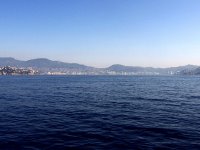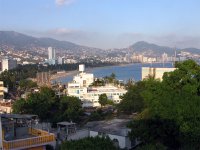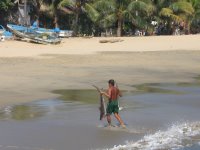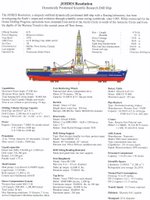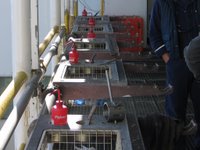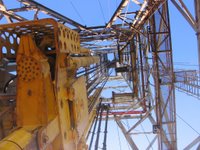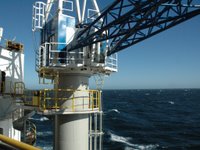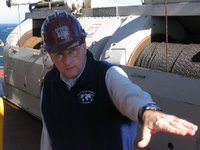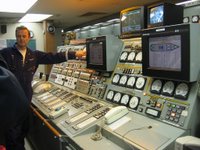Acapulco, Part II - Dwight Hornbacher and I ventured up into the Fuerte de San Diego, an old Spanish fort that sits right across from our port berth, just off the main street that runs through the city. You can't see more than an old stone wall from the sidewalk, but I'm very glad that we decided to investigate - visiting this landmark is a must for understanding the history and significance of Acapulco.

Originally begun in 1614, the Fuerte de San Diego was rebuilt in 1783 after an earthquake destroyed the old fort in 1776. The fort was designed to protect the port of Acapulco from attack, in order to safeguard the lucrative Spanish trade with the Far East.
Nowadays, the fort houses the Museo Histórico de Acapulco. Each compartment of the fort featured a different aspect of its history - the importance of the Manila Galleon, trade with the Far East, its strategic significance in the War of Independence from Spain. The fort is in pristine condition - you can climb to the roof and look down upon the city; the guns are still in place, and the chapel and kitchen have been restored in period style.
There's a fascinating piece about Piracy, in particular the notorious "Pirate" Francis Drake. I spoke with one of the museum's hosts, and pointed out that in American schools, Sir Francis Drake is never called a Pirate; rather, one of the greatest English sea-captains of all time, and a hero in the fight against the Spanish Armada. The host acknowledged that when a British tour group comes through, he's careful to blame the term on a poor "Spanglish" translation... otherwise they often get upset at the epithet.
But the reality is, of course, that one nation's pirate is another's hero, and Sir Francis Drake was rapacious in the hunt for Spanish treasure, and infamous for devastating raids on the Spanish Main. The fort in Acapulco was conceived specifically to protect Spanish ships from this kind of privateering.
The museum also taught us about the strategy and historical significance of the fort. For example, its ingenious positioning atop the northwestern bluff created a huge tactical advantage: as invading ships entered Acapulco Bay, prevailing winds prevented them from bringing their guns to bear until AFTER the Fuerte de San Diego's guns could launch several volleys in their direction. This and the rugged surrounding terrain made the fort a formidable target.
In fact, the fort only fell once - it succumbed to siege during Mexico's War of Independence from Spain. We learned that Vicente Guerrero, after whom they named the State of Guerrero (in which Acapulco lies), distinguished himself with insurgent tactics to defeat the Spanish ... thus the term "Guerrila warfare".
Here are a few pictures...
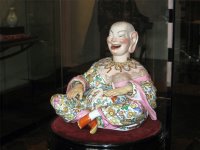
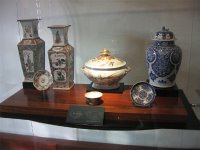
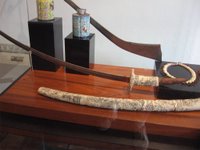
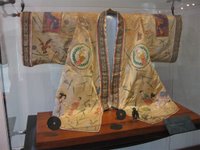
Exhibits from Acapulco's trade with the Far East (15th - 19th C.)
.
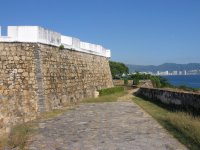
Fuerte de San Diego sits atop a bluff directly overlooking Acapulco's main thoroughfare
.
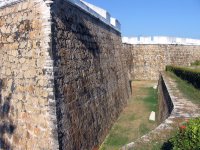
The Spanish Fort's dry moat surrounds its 40-foot walls
.
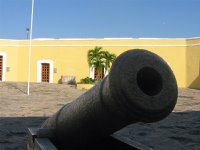
A single cannon guards the courtyard, where Acapulco's citizens would quarter in case of invasion
.
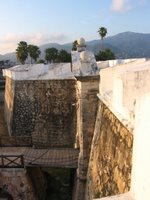
The drawbridge is lowered for tourists to enter...
.
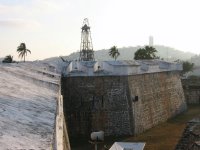
The JR's derrick rises over the walls of Fuerte de San Diego
.
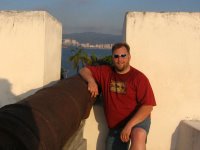
I pose with one of the fort's guns on the roof, overlooking the city
.
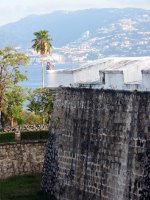
Dwight Hornbacher stands in one of the fort's five parapets...
.
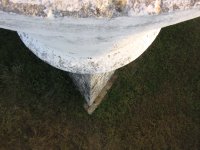
The view from atop the rampart... .


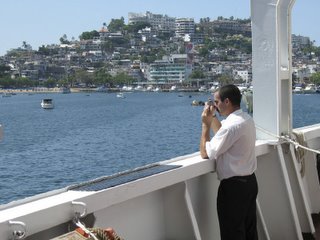
 Originally begun in 1614, the Fuerte de San Diego was rebuilt in 1783 after an earthquake destroyed the old fort in 1776. The fort was designed to protect the port of Acapulco from attack, in order to safeguard the lucrative Spanish trade with the Far East.
Originally begun in 1614, the Fuerte de San Diego was rebuilt in 1783 after an earthquake destroyed the old fort in 1776. The fort was designed to protect the port of Acapulco from attack, in order to safeguard the lucrative Spanish trade with the Far East. 












